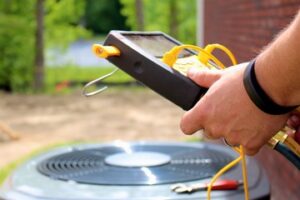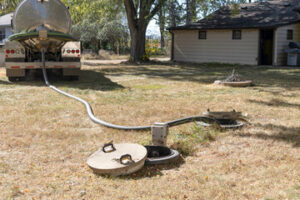Window Replacement is an excellent home improvement project that can improve your comfort, increase the value of your home, and lower energy costs. However, there are many factors to consider when deciding whether to repair or replace windows.

One of the most obvious signs that windows are in need of replacement is difficulty opening or closing them. Often, this is due to natural settling or wear and tear. Contact Window Replacement Ellicott City, MD for professional help.
Window replacement is a major home improvement project that can improve a homeowner’s comfort, energy efficiency, and resale value. However, it can also be an expensive project. Window costs vary significantly depending on the type and style of windows, frame material, and energy-efficient options. These factors can affect both the initial purchase price and the total cost of window replacement. To help homeowners understand the true cost of a window replacement, we’ve compiled an in-depth breakdown of the various associated costs.
Window style and material are two of the biggest contributors to overall window replacement costs. From budget-friendly vinyl and fiberglass to premium wood-clad windows, the choice of materials has a significant impact on both cost and performance. Energy-efficient features like Low E glass coatings and double or triple-pane glazing add to the upfront costs but can save money in the long run.
The size of the windows and installation location also have a significant impact on the cost of window replacement. Larger windows require more time and manpower to install, which drives up labor costs. Additionally, windows that are located on higher floors require special handling and can lead to increased safety risks.
For example, if you are replacing windows in a second floor bedroom, you may have to pay for a crane or scaffolding to safely access and complete the job. These costs can quickly add up and increase your overall window replacement budget.
When planning your window replacement project, it’s a good idea to include all potential costs into the overall budget. This will help ensure that your new windows are exactly what you want and need. Additionally, by incorporating window replacement into a larger home remodel, you can save on demolition and construction costs.
The costs of window replacement can vary from state to state, reflecting varying labor rates, material availability, building codes, climate conditions, and energy-efficient options. The geographic differences in the prices of window replacement highlight the importance of researching local market conditions and regional pricing when determining a window cost.
Energy Efficiency
Upfront costs are one factor when comparing window options, but homeowners should consider the long-term impact on energy efficiency and performance. A simple upgrade with ENERGY STAR rated windows could reduce energy bills, improve home comfort, and increase the value of the property when it’s time to sell.
New technology has dramatically improved the energy efficiency of replacement windows. Advancements like low-e tints reflect heat from the sun, keeping the interior cooler in the summer and warmer in the winter. In addition, insulated glass helps maintain indoor temperatures and a tighter seal prevents air leakage and drafts.
In addition to energy savings, new windows can add a sense of security to the home with styles that lock and cannot be opened from the outside. They can also help to limit noise infiltration from the street or neighbors, making a home more comfortable and quiet.
The energy efficiency of a window is also measured in terms of the embodied energy (the amount of energy expended to manufacture and install the windows). According to engineer Keith Haberern, a new single-pane window consumes about 2.3 million BTUs in energy just to produce. This energy is reflected in the upfront cost of the window, but it would take approximately four years for the homeowner to pay for this expense with energy savings.
Choosing replacement windows with an ENERGY STAR rating can significantly lower energy costs and save money over the life of the windows. This is because windows with this rating meet a strict set of energy efficiency guidelines. In addition, the government offers tax credits for windows with this rating.
Many different types of materials are available for Window Replacement, and the choice of material can have a major impact on the overall cost. Cheaper materials may not last as long or provide sufficient insulation, while more expensive materials can be worth the investment for their durability and longevity. The cost of materials should be considered in conjunction with the desired style and aesthetic of the home to determine which window is right for the property.
Aesthetics
One of the main reasons people choose to replace their windows is to enhance their home’s aesthetic. Old windows can detract from the beauty of your home, but new replacements offer a range of styles and materials that are sure to suit your style preferences. In fact, the aesthetics of your windows can even affect your home’s value, so it’s important to consider the options available before making a decision.
The type of window frame you choose is a major factor in determining the aesthetics of your windows. Wood frames offer a classic look that complements traditional and historic homes, while vinyl frames are less expensive and come in a variety of colors. Other factors, such as maintenance requirements and durability, should also be taken into account when choosing a window frame material.
Another factor that contributes to the aesthetics of your windows is their design. Window designs are available in a variety of styles, from classic double-hung windows to casement windows with grids and divided panes that add a touch of formality to contemporary homes. The style of your windows should align with the architectural design of your home to create a harmonious aesthetic.
Other decorative elements, such as muntins and grilles, can also add visual appeal to your replacement windows. These are typically installed between the glass panels and can be made from a variety of materials, including wood, aluminum, or vinyl. However, it’s important to note that while these decorative features can improve your window’s appearance, they may not be as energy efficient as clear glass.
Finally, window color plays a critical role in the aesthetics of your replacement windows. While neutral tones are popular for window replacements, bold colors can help to create a dramatic focal point that makes your home stand out from the rest of the neighborhood.
Regardless of the reason for your window replacement, it’s important to find the right window design that suits your needs and budget. A professional window installer can provide guidance on the various options available and help you select the best windows for your home.
Maintenance
Window replacement and restoration require regular maintenance to ensure optimal performance. Proper care can extend the lifespan of windows and add curb appeal to any home. Recognizing and addressing signs of wear and tear can also prevent serious problems from developing, such as a sudden spike in energy bills that could indicate damaged window seals. Taking prompt action can help homeowners avoid high repair costs and improve the overall value of their homes.
A broken window pane not only opens your home up to the elements, but it can also be a security concern. If your windows are not functioning properly, they may allow intruders into the home and create a safety risk for family members and pets. This is a clear indication that it is time for replacement.
In many cases, it is more cost-effective to replace an entire window rather than replacing just the glass. Replacing just one window pane can result in a poor fit, which will impact both energy efficiency and security.
If you choose to replace your existing window, a professional installation will begin by carefully removing the old window from the opening. This process can be messy, and it is important to take precautions to avoid damaging the surrounding frame or wall. The contractor will first locate the sash locks and release them (usually small levers or buttons). Then, they will lift the sash and carefully remove it from the opening, taking care not to damage the glass or the trim. Once the sash is free, they will clean off the interior and exterior surfaces, including any jamb liners that are still attached.
Once the window has been cleaned, they will prepare the rough window opening for installation. This can include installing a backer rod, which is a foam material used to fill gaps and prevent air leaks, and caulking the frame and trim. They will then position the new window and use a bubble level to ensure that it is plumb and square. They will then apply a bead of caulk around the perimeter of the new window to seal and insulate it.








